Historical Background of Ethiopian Dress
The dress of Ethiopia reflects the rich cultural and historical heritage of the nation, showcasing a diverse array of traditional garments worn by different ethnic groups. Historically, Ethiopian clothing has been influenced by centuries of traditions, religious beliefs, and social structures, resulting in unique styles that symbolize identity and craftsmanship. Over time, these traditional dresses have evolved while still retaining their cultural significance, serving as a vibrant expression of Ethiopia’s unique history and cultural diversity.
Ancient Clothing Traditions
The traditional dress of Ethiopia reflects the rich cultural heritage and diverse history of the region. Ancient clothing traditions in Ethiopia date back thousands of years, with influences from various civilizations, including the Axumite Empire, redeeming a unique identity through textiles, symbols, and craftsmanship. Historically, Ethiopian garments were primarily made from locally sourced materials like cotton and wool, designed to suit the climate and cultural practices of different communities. The use of intricate patterns, embroidery, and vibrant colors played a significant role in signifying social status, regional identity, and religious beliefs. Over centuries, these traditional outfits have evolved but continue to symbolize Ethiopian pride and cultural continuity, with variations across different ethnic groups and regions maintaining a deep connection to the country’s ancient past.
Influence of Historical Empires
The traditional dress of Ethiopia reflects a rich history shaped by various historical empires that influenced the country’s culture and identity. The Aksumite Empire, one of the earliest in the region, laid the foundation for Ethiopia’s distinctive cultural expressions, including its clothing. During the medieval Zagwe and Solomonic dynasties, royal and religious attire became more elaborate, emphasizing craftsmanship and symbolism. These empires fostered the development of unique textile styles, often featuring intricate embroidery and patterns that signify regional and cultural affiliations. The influence of these historical empires is evident in the use of wool, cotton, and vibrant colors that continue to characterize Ethiopian dress. Additionally, religious practices introduced during these periods, especially Christianity, played a significant role in shaping traditional attire, with items like the gabi and shamma being prominent. Overall, Ethiopia’s dress is a vivid reflection of its imperial past, blending indigenous craftsmanship with historical influences across centuries.
Evolution of Traditional Attire
The traditional dress of Ethiopia reflects the rich cultural heritage and diverse ethnic history of the nation. Historically, Ethiopian attire has been influenced by the country’s ancient civilizations, religious practices, and climatic conditions. In ancient times, clothing was often made from locally sourced materials such as cotton, wool, and animal hides, tailored to suit the regional climate. Over the centuries, the dress evolved with the influence of neighboring cultures and internal innovations, resulting in unique styles specific to each ethnic group. The adoption of Christian and Islamic motifs further shaped the designs, patterns, and accessories used in traditional attire. During the medieval period, the use of linen and silk became prominent among the aristocracy, signifying status and wealth. The evolution of Ethiopian dress also saw the incorporation of elaborate embroidery, jewelry, and headgear that served both aesthetic and symbolic purposes. In contemporary times, while traditional attire is often reserved for cultural ceremonies and festivals, it remains a vital expression of identity and heritage, maintaining its significance amidst modern influences. Overall, the historical progression of Ethiopian dress narrates a story of cultural resilience, diversity, and historical continuity.
Traditional Ethiopian Clothing Styles
Traditional Ethiopian clothing reflects the rich cultural heritage and diverse customs of the country. It is characterized by vibrant colors, intricate patterns, and unique fabrics that hold cultural significance. These styles vary across regions, showcasing Ethiopia’s heritage through distinctive designs and traditional accessories. Wearing these garments often symbolizes identity, pride, and a connection to Ethiopia’s history and traditions.
Weyr and Lebs: Men’s Attire
Traditional Ethiopian clothing styles, particularly for men, are characterized by their vibrant colors and unique designs that reflect the country’s rich cultural heritage. Weyr and Lebs are two prominent traditional attires worn by Ethiopian men during special occasions and cultural ceremonies. Weyr is a type of cloak or shawl made from wool or cotton, often decorated with intricate patterns, and draped over the shoulders for warmth and style. Lebs, also known as a traditional Ethiopian shirt, is typically made from white cotton fabric and features embroidered designs along the collar, sleeves, and front, signifying regional and cultural identity. These garments are not only a reflection of Ethiopia’s diverse history but also symbolize pride and cultural identity for its people.
Habesha Kemis: Women’s Dress
Traditional Ethiopian clothing styles reflect the rich cultural heritage and diverse history of the country. Among these, the Habesha Kemis is a prominent and cherished dress worn by Ethiopian women, especially during special occasions and festivals.
- The Habesha Kemis is a long, white dress made from lightweight cotton fabric. It is often decorated with colorful embroidery along the neckline, sleeves, and hem, showcasing intricate patterns and symbolism unique to different regions.
- The embroidery, known as “tibi,” uses vibrant thread colors such as red, green, yellow, and blue, adding cultural significance and aesthetic appeal.
- Women typically pair the Kemis with a shawl called “netela,” which is draped over the shoulders or head and complements the dress with additional embroidered details.
- The style of the Habesha Kemis can vary between regions, with some incorporating metallic accents or beaded jewelry to enhance the overall traditional look.
- This attire holds cultural importance, symbolizing Ethiopian identity, pride, and respect for tradition, especially during religious and national celebrations.
Headgear and Accessories
Traditional Ethiopian clothing reflects the rich cultural heritage and diverse ethnic identities of the country. These garments are often vibrant, intricately designed, and hold significant cultural and ceremonial value. From the colorful shamma to the elegant habesha kemis, traditional attire showcases Ethiopia’s unique textile artistry and social customs.
- Shamma – A traditional woven cloth worn around the shoulders, often made from cotton and decorated with colorful patterns, used by both men and women during festivals and ceremonies.
- Habesha Kemis – A long, white dress adorned with embroidered borders, typically worn by women on special occasions such as weddings and religious festivals.
- Ghéta – A traditional sari-like garment for women, sometimes layered with a shawl, showcasing intricate embroidery and bright colors.
Headgear plays an important role in Ethiopian traditional dress, often reflecting regional and cultural affiliations. Some notable headgear includes the following:
- Gutira – A woven cap or head covering worn by men, often embroidered with traditional patterns.
- Shash – A white or patterned cloth wrapped around the head, commonly worn during religious ceremonies.
- Kra or Netela – A lightweight, embroidered scarf or shawl draped over the shoulders or head, frequently used by women.
Accessories complement traditional Ethiopian attire and often carry cultural symbolism. These include beaded jewelry, silver ornaments, and decorative necklaces, earrings, and bangles. These accessories are typically handcrafted and worn during festive occasions, showcasing Ethiopian craftsmanship and social identity.
Regional Variations in Ethiopian Dress
The dress of Ethiopia showcases the rich cultural diversity of the country, with each region displaying unique styles, fabrics, and traditional garments. These regional variations reflect the history, climate, and cultural influences that have shaped Ethiopia’s diverse communities. Exploring these differences offers a glimpse into the vibrant heritage and identity of the Ethiopian people.
Northern Regions: Tigray and Amhara
In the northern regions of Ethiopia, particularly Tigray and Amhara, traditional dress reflects a rich cultural heritage and regional identity. The people often wear intricately woven garments made from cotton or wool, featuring vibrant colors and elaborate patterns that symbolize their history and local customs.
For men in Tigray and Amhara, the customary attire includes a white cotton shawl called a “Gabi,” which is often worn over a simple shirt and trousers. They may also wear a traditional piece called a “Netela,” a lightweight cloth draped over the shoulders or head, especially during religious ceremonies and celebrations.
Women in these regions typically dress in colorful dresses made of cotton, decorated with embroidery and beadwork that highlight regional motifs. The “Habesha Kemis” is a common traditional dress, characterized by its elegant design, often complemented with a “Shema,” a woven cloth worn around the shoulders, and jewelry such as silver necklaces and bangles.
The regional variations in dress not only serve aesthetic purposes but also signify social status, age, and community affiliation. These traditional garments are prominently worn during festivals, religious events, and important life milestones, preserving the cultural identity of Tigray and Amhara peoples.
Southern Ethiopia: Omo Valley and Surroundings
In Southern Ethiopia, particularly in the Omo Valley and its surroundings, traditional dress reflects the rich cultural diversity of the region. The various ethnic groups, such as the Hamar, Mursi, Karo, and Bana, wear distinctive garments that signify their identity, social status, and traditions. Brightly colored skirts, beaded necklaces, and intricate body paintings are common features of their attire, often complemented by elaborate headpieces and accessories crafted from natural materials like leather and beads. Men’s clothing tends to include leather or animal-hide garments, paired with unique ornaments, while women typically wear wrap-around skirts and decorative jewelry. These traditional outfits are often worn during ceremonies, festivals, and daily life, showcasing the vibrant cultural heritage of Southern Ethiopia. The diverse dress styles in this region highlight the deep-rooted customs and the importance of visual identity among its people.
Oromia and Other Ethnic Groups
Regional variations in Ethiopian dress reflect the rich cultural diversity of the country, with different ethnic groups showcasing unique traditional attire that signifies their heritage and identity. Among these, the Oromia region stands out for its distinctive clothing styles, which are often vibrant and decorated with intricate patterns.
- The Oromo people typically wear a checked or striped cotton cloth called “woya,” often paired with embroidered accessories and jewelry that highlight their cultural symbols.
- In many Oromo communities, men commonly don a simple wrap or wrap-around cloth called “afta,” while women wear long, colorful dresses complemented by beaded jewelry and head coverings.
- Other Ethiopian ethnic groups, such as the Amhara and Tigray, tend to wear more traditional attire made from fine fabrics, often in white or pastel shades, with elaborate embroidery that denotes social status and regional identity.
- For example, the Amhara often wear a “gab” (a traditional shawl) and a white shirt, while Tigray women may adorn themselves with intricately stitched dresses and a headscarf called “netsela.”
- In the southern and eastern regions, like the Somali and Afar peoples, traditional dress includes lightweight, breathable garments suitable for the hot climate, often decorated with colorful beads and patterns.
Overall, Ethiopian dress varies greatly across regions, embodying the diverse cultural expressions that make up the nation’s national identity.
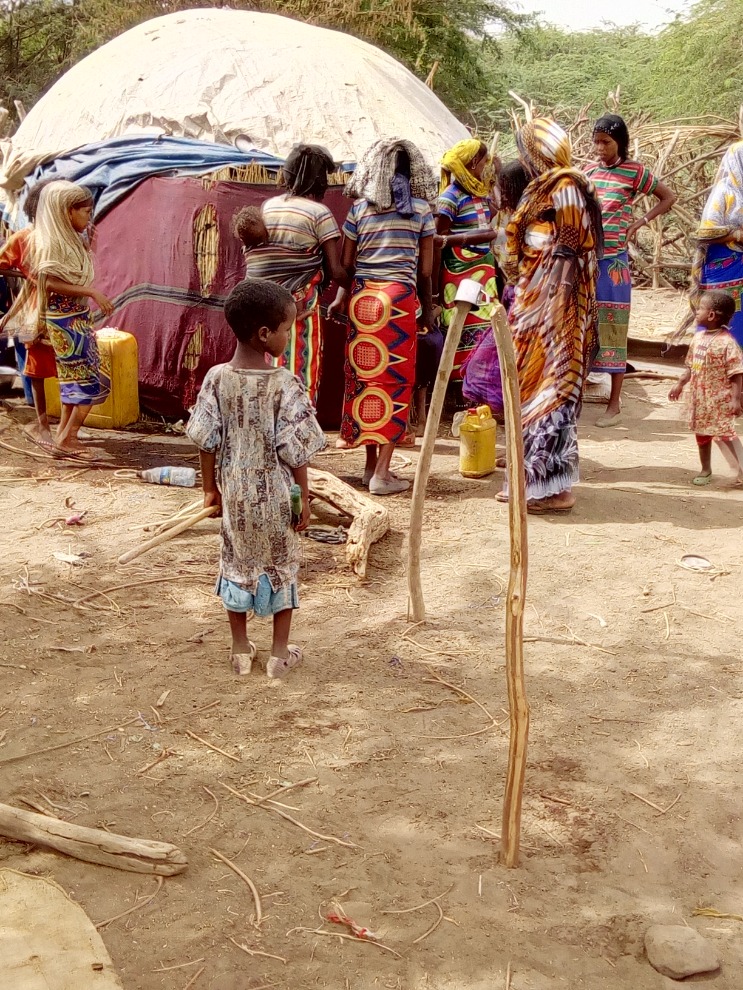
Materials and Fabrics Used in Ethiopian Dress
The dress of Ethiopia showcases a rich and diverse cultural heritage, reflecting the country’s history and traditions through various materials and fabrics. Traditional Ethiopian attire often features intricate patterns, vibrant colors, and unique textiles that hold cultural significance. From handwoven fabrics to luxurious textiles, the materials used in Ethiopian dresses highlight the craftsmanship and artistry of the region.
Cotton and Linen Textiles
Ethiopian dress is renowned for its vibrant colors, intricate patterns, and the use of traditional materials such as cotton and linen. These fabrics are integral to the country’s rich cultural heritage and are often handcrafted, reflecting regional styles and techniques.
Cotton is one of the most commonly used materials in Ethiopian textiles due to its availability, durability, and comfort. It is often woven into colorful, elaborate patterns that are emblematic of various ethnic groups and traditional ceremonies. Cotton fabrics are used for making traditional garments like the habesha kemis, which is worn during special occasions and religious festivals.
Linen, though less prevalent than cotton, is also valued in Ethiopian dressmaking. Made from flax fibers, linen is appreciated for its natural sheen and breathability, making it suitable for lighter, elegant clothing. Historically, linen was used in ceremonial dresses and costumes for its fine texture and ability to be dyed in vivid colors.
Both cotton and linen textiles are often dyed using natural dyes derived from plants, insects, and minerals, resulting in rich, earthy tones that enhance the beauty of Ethiopian dress. The craftsmanship involved in producing these fabrics highlights Ethiopia’s artistic traditions and the significance of dress in expressing cultural identity.
Traditional Dyes and Colors
The traditional Ethiopian dress is renowned for its vibrant materials, intricate fabrics, and rich colors that reflect the country’s cultural heritage. The primary materials used include cotton, which is favored for its comfort and availability, and silk, often reserved for special occasions due to its luxurious feel. Handwoven fabrics such as “Habesha kemis” are crafted from finely woven cotton threads, showcasing exquisite craftsmanship. These fabrics are often decorated with embroidered patterns that have cultural significance.
In addition to the base textiles, traditional dyes play a crucial role in creating the distinctive colors seen in Ethiopian attire. Natural dyes derived from plants, roots, and minerals are used extensively. For example, the bright reds and oranges are obtained from the root of the “beso” plant, while the deep blacks are achieved through the use of iron-rich clay. Indigo is commonly used to produce shades of blue, giving Ethiopian garments their characteristic look.
The colors in Ethiopian dress are not just aesthetic but also symbolic, representing various social and cultural meanings. Bright reds, greens, and yellows are often employed during festivals and celebrations, symbolizing vitality, fertility, and prosperity. The combination of high-quality materials, traditional dyes, and vibrant colors makes Ethiopian dress a unique reflection of its rich cultural identity.
Embroidery and Decorative Techniques
Ethiopian dress is renowned for its rich use of materials, vibrant fabrics, intricate embroidery, and decorative techniques that reflect the country’s diverse cultural heritage. Traditionally, cotton, silk, and wool are the primary fabrics used, each selected for their availability and cultural significance. Cotton is the most common material, often woven into simple or complex patterns, serving as the base for many traditional garments. Silk is reserved for ceremonial attire, adding a luxurious touch to special occasions. Wool is used in colder regions, providing warmth and durability.
Embroidery plays a vital role in Ethiopian dress, with techniques varying across different ethnic groups. Common stitches include cross-stitch, stem stitch, and satin stitch, which are used to create elaborate patterns and symbols that often carry cultural or religious meanings. Threads of colored cotton, silk, or metallic gold and silver are used to embellish garments, enhancing their visual appeal. The most popular decorative technique is the use of intricate embroidery on collars, sleeves, and hems.
Decorative techniques include the use of lace, beading, and appliqué work to further enhance the beauty of traditional attire. In particular, the “Shamma” and “Gabi,” traditional Ethiopian shawls made from woven cotton or wool, often feature embroidered borders or fringes. The combination of vibrant fabrics, detailed embroidery, and ornamentation produces garments that are not only visually stunning but also culturally meaningful, reflecting Ethiopia’s rich history and craftsmanship.
Special Occasion Attire
Special occasion attire in Ethiopia is a reflection of the country’s rich cultural heritage and diverse traditions. From vibrant traditional fabrics to intricately designed accessories, Ethiopian formal wear plays a significant role in ceremonies, celebrations, and important gatherings. These garments often symbolize respect, identity, and community pride, making them a vital aspect of Ethiopian social life and cultural expression.
Wedding Dresses
Special occasion attire and wedding dresses in Ethiopia are deeply rooted in cultural traditions and showcase the rich heritage of the Ethiopian people. Ethiopian wedding dresses often feature intricate embroidery, vibrant colors, and ornate jewelry that reflect the country’s diverse cultural influences. Brides typically wear white or brightly colored dresses adorned with gold or silver accessories, symbolizing purity and prosperity. These garments are carefully crafted to highlight regional styles, such as the traditional “habesha kemis” made from hand-woven fabrics, which are popular in many Ethiopian communities. For formal occasions, Ethiopians often select attire that combines modern elegance with traditional elements, emphasizing the importance of cultural identity and celebration in their dress choices. Overall, Ethiopian special occasion dresses are both a reflection of individual identity and a celebration of the nation’s cultural legacy.
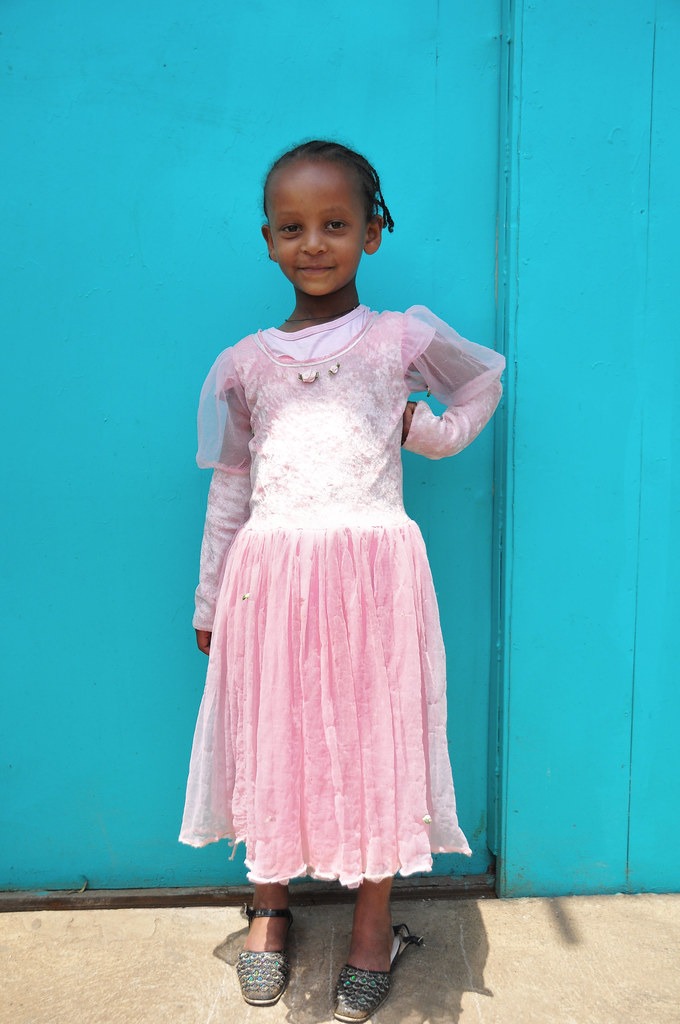
Cultural Festivals and Celebrations
In Ethiopia, special occasion attire reflects the rich cultural heritage and diverse traditions of its people. During important ceremonies and celebrations, Ethiopians often wear traditional clothing such as the *Habesha kemis* for women, which is typically made of white cotton fabric adorned with colorful embroidered patterns along the borders. Men often dress in a *Gabi* or *Shamma*, large white cloths draped over the shoulders, symbolizing purity and respect. These garments are worn during religious festivals, weddings, and national holidays, emphasizing a deep connection to cultural roots.
Cultural festivals and celebrations in Ethiopia, such as Timket, Meskel, and Ethiopian New Year, showcase vibrant dress styles that highlight the nation’s colorful traditions. During Timket, a religious festival celebrating Epiphany, participants wear their finest traditional attire, often complemented with jewelry and adornments, to partake in processions and religious ceremonies. Meskel, marking the discovery of the True Cross, is celebrated with lively processions where people don their traditional dresses, creating a vivid tapestry of cultural pride. The Ethiopian New Year, known as Enkut T’k’et, features people wearing fresh, bright clothing to welcome prosperity and new beginnings.
Overall, special occasion attire and traditional dress in Ethiopia serve as profound expressions of national identity and cultural continuity, uniting communities in their celebrations and festivities across the country.
Religious Ceremonies and Attire
In Ethiopian culture, special occasion attire and religious ceremonial dress hold significant cultural and spiritual importance. During religious events and ceremonies, individuals often wear traditional clothing such as the size and netela for women, and the shamma or white cotton clothing for men, which symbolize purity and respect. These garments are typically handcrafted with intricate patterns and are sometimes decorated with embroidery or religious symbols reflective of Ethiopia’s rich spiritual heritage. For formal events and celebrations, Ethiopians favor modest yet elegant traditional attire that honors their history and religious beliefs, often incorporating vibrant colors and detailed craftsmanship. Wearing appropriate attire during religious ceremonies not only demonstrates reverence but also reinforces cultural identity and community bonds within Ethiopian society.
Modern Influences and Contemporary Ethiopian Fashion
Modern influences and contemporary Ethiopian fashion beautifully blend traditional craftsmanship with global trends, creating a vibrant and dynamic style that reflects the country’s rich cultural heritage and modern identity. Today, Ethiopian designers incorporate innovative designs, innovative materials, and international aesthetics while honoring age-old traditions, making Ethiopian dress a unique statement of cultural pride and modern elegance.
Integration of Western Styles
Modern influences and contemporary Ethiopian fashion reflect a dynamic blend of traditional heritage and global trends, showcasing Ethiopia’s evolving cultural identity. Many designers incorporate Western styles such as urban streetwear, haute couture, and minimalist aesthetics, adapting them with local fabrics and patterns to create distinctive looks. This integration allows Ethiopian fashion to resonate on both local and international stages, emphasizing versatility and innovation. As young designers embrace globalization, they preserve traditional motifs while experimenting with new silhouettes, textures, and accessories, resulting in a vibrant and eclectic dress culture that honors the past while embracing the future.
Urban Fashion Trends
Modern influences and contemporary Ethiopian fashion are shaping the country’s urban dress trends, blending traditional elements with global styles to create unique, vibrant looks. Ethiopian designers are increasingly incorporating innovative fabrics, patterns, and accessories that reflect both cultural heritage and modern aesthetics, making Ethiopian fashion a dynamic and evolving scene.
- The use of traditional motifs such as tigray patterns and amhara embroidery is now integrated into stylish, contemporary garments that appeal to young urban populations.
- Streetwear and casual urban fashion in Ethiopia often feature bold colors and prints inspired by local art and cultural symbols, making everyday attire a statement of identity.
- Fusion of Western styles with Ethiopian textiles and accessories has led to a distinctive fashion identity, evident in the popularity of Addis Ababa’s fashion districts.
- Designers are embracing sustainability and ethical fashion practices, incorporating eco-friendly materials and promoting local craftsmanship.
- The rise of fashion events and runway shows in Ethiopian cities highlights the growing influence of global fashion trends adapted to local tastes.
Fashion Designers and Industry Development
Modern influences and contemporary Ethiopian fashion reflect a vibrant blend of traditional elements and global trends, showcasing the country’s rich cultural heritage while embracing innovation. Ethiopian fashion designers play a crucial role in shaping the industry by integrating indigenous fabrics, patterns, and techniques with modern aesthetics, creating unique and stylish clothing that appeals to both local and international markets.
- Designers like Ebba Ale and Genet Agonafer are leading the industry with their innovative approaches that fuse traditional Ethiopian motifs with contemporary designs.
- The industry has seen a rise in fashion shows and events that highlight Ethiopian talent and promote local clothing brands on global platforms.
- Use of traditional textiles such as cotton, silk, and leather remains prominent, but with modern cuts and accessories enhancing their appeal.
- Contemporary Ethiopian fashion often features vibrant colors, intricate embroidery, and symbolic patterns representing cultural identity.
- Fashion industry development is supported by increasing investment, training programs, and collaborations with international designers, fostering growth and innovation.
Significance of Dress in Ethiopian Culture
The dress of Ethiopia holds a deep cultural significance, reflecting the country’s rich history, diverse ethnic groups, and unique traditions. Traditional attire serves as a symbol of identity, social status, and cultural pride for Ethiopians. Through vibrant fabrics, intricate patterns, and special accessories, Ethiopian dress embodies the nation’s heritage and cultural values, making it an essential aspect of everyday life and celebrations alike.
Social Identity and Ethnic Pride
The dress of Ethiopia holds profound significance in the country’s culture, serving as a powerful symbol of social identity and ethnic pride. Traditional garments, such as the “habesha kemis” for women and the “gabi” or “shamma” for men, are often worn during important ceremonies, festivals, and everyday life, reflecting deep-rooted customs and heritage. These attire choices not only display individual status and community belonging but also showcase the rich diversity of Ethiopia’s numerous ethnic groups. Wearing traditional dress fosters a sense of unity and pride among Ethiopians, acting as a visual representation of their history, values, and cultural resilience. Furthermore, these clothes often feature intricate patterns, bright colors, and symbolic embroidery that carry specific meanings, further emphasizing identity and shared cultural narratives. Overall, Ethiopian dress is a vital expression of ethnic identity and cultural pride that preserves and celebrates the nation’s vibrant heritage amidst a modernizing world.
Symbolism in Colors and Patterns
The dress of Ethiopia holds deep cultural significance, serving as a powerful symbol of identity, history, and social status. Traditional attire reflects the diverse cultural heritage of the country, with each region and community showcasing unique patterns, styles, and textiles. Wearing traditional dress during festivals, ceremonies, and daily life reinforces cultural pride and unity among Ethiopians.
Colors and patterns in Ethiopian dresses carry rich symbolism, often representing concepts such as fertility, prosperity, and spirituality. Bright colors like red, green, and yellow are commonly used, symbolizing life, hope, and peace respectively. Intricate patterns and embroidery not only enhance the aesthetic appeal but also often represent specific tribal identities or historical narratives. These vibrant textiles serve as a visual language, communicating stories and values that have been passed down through generations.
Preservation of Cultural Heritage
The dress of Ethiopia holds a profound significance in Ethiopian culture as a symbol of identity, tradition, and social status. It reflects the rich history and diverse ethnic heritage of the nation, showcasing unique patterns, colors, and textiles that are specific to various regions and communities. Traditional Ethiopian attire, such as the Habesha kemis, not only serves as everyday clothing but also plays an important role during cultural celebrations, religious ceremonies, and important life events, reinforcing community bonds and cultural pride.
Preserving Ethiopian traditional dress is essential for safeguarding the country’s cultural heritage amid modernization and globalization. It helps maintain a connection to ancestral customs and promotes awareness of Ethiopia’s diverse ethnic identities. Efforts to preserve and promote traditional clothing contribute to a broader appreciation of Ethiopia’s history and social values, ensuring that future generations continue to honor and celebrate their unique cultural legacy.

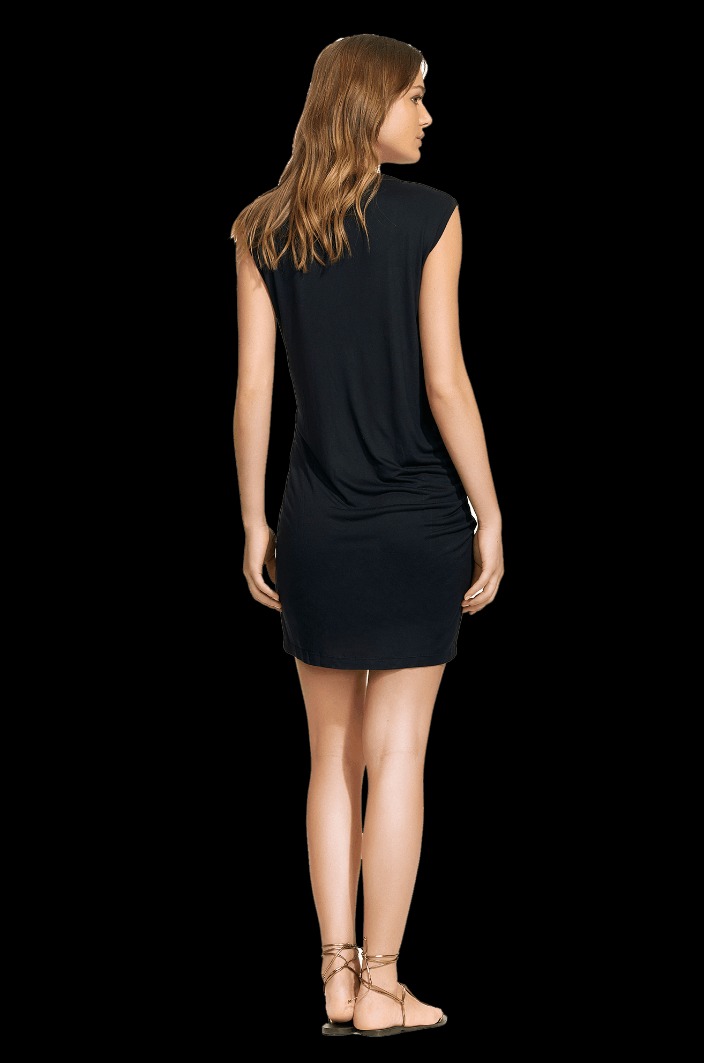
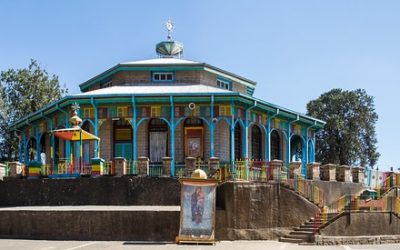

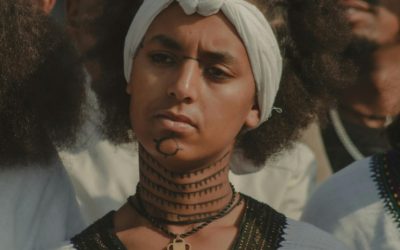
0 Comments